#the desi-gn get it? I'll show myself out
Explore tagged Tumblr posts
Text
Pavitr Prabhakar: The Design
Pavitr Prabhakar my beloved!
I love him. I absolutely love Pavitr and everything about him. And the best thing about him, other than his everything, is his design. So let's get to it!
PART 1: THE MASK
He was so cool and such a total sunshine but the most striking aspect was the immaculate design. Huge upgrade on his old model which was pretty much just a normal spider-suit with a white dhoti, which, not gonna lie, was just disappointing and underwhelming. But they went off on Pavitr's design in the movie and everyone's talking about it so let's also talk about it.
First of all,
LOOK AT MY BOY!!!
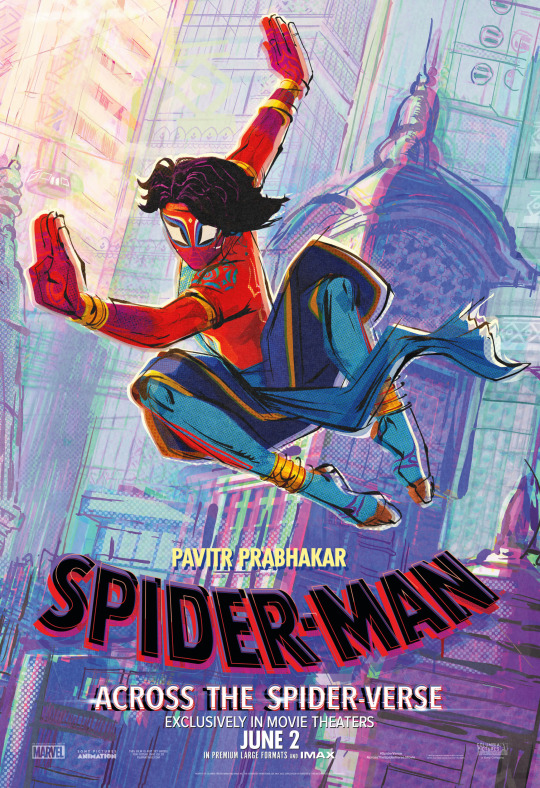
Just look at that design! So cool! So awesome! And so so Desi!!!
Its these desi aspects that I want to shed light on cos I know there are non-Indian fans who didn't catch a lot of the nuances cos they're not familiar enough with Indian culture and even Indian fans who didn't know about some details cos they aren't from the areas the inspiration for these elements were drawn from.
Mainly I hope to help artists and writers with this, so they have more information to create with, as well as the casual fans so they have more info and can immerse themselves better as well as appreciate just how much effort went into making this spectacular movie.
This might be a long post with me just rambling away so braze yourself people.
So lets get into it.
{WARNING: Infodump incoming}
First, lets start with the Mask
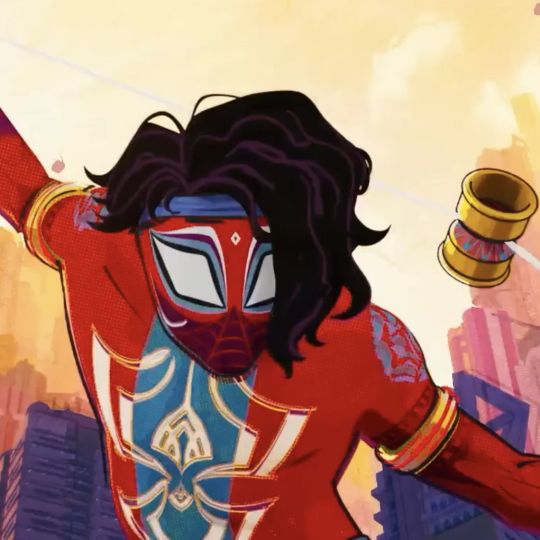
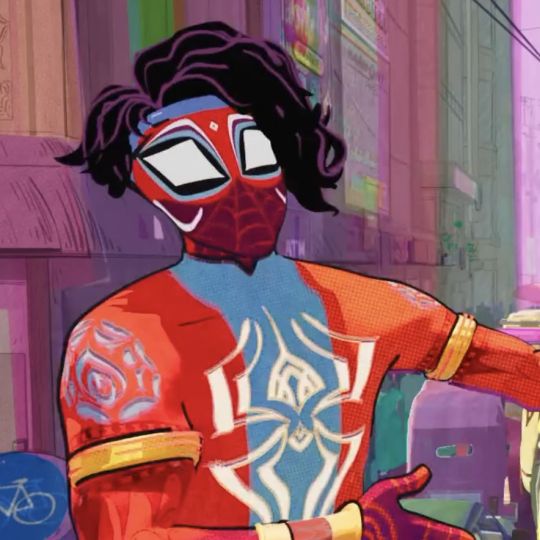
So here we have two different angles of his mask. The most prominent features of his mask are his eyes. There is a multi-layer outline for them in black, blue, red, and white, which of course are the classic spiderman colours but never quite used like this. Usually there is only a single outline in shades of, or adjacent colours of black, red, or white.
(Disclaimer: I'm not a 100% sure of this being actually the inspo behind the eyes. I'm pretty sure though, like 80%. So this has not been confirmed.)
The design for his eyes reminded me of one specific thing:
Koodiyattam, which is a 2000 year old ancient temple artform from the southern Indian state of Kerala. Koodiyattam is not just the only surviving Sanskrit theatre in the world, but it also includes elements of koothu, from the Sangam era, the golden age of Tamizh culture, and thus was declared by UNESCO as a Masterpiece of the Oral and Intangible Heritage of Humanity.
Below is a picture of a Koodiyattam performer.
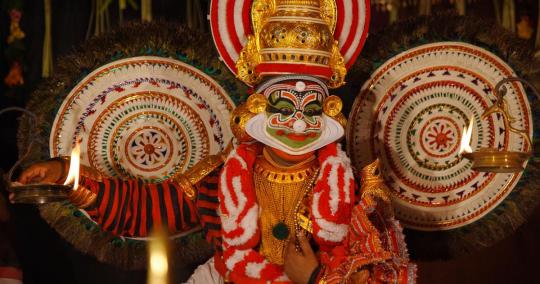
Instantly you'll realize that this is a costume drama, with extensive makeup, and complicated dress, especially with regards to the headgear, and is overall similar to the Beijing opera, not in terms of make or design or performance, but rather in elaborateness of ensemble. Japanese art forms like Noh or Kabuki could also come to mind along with certain Balinese dances.
Here is another photo which will give you a better look.
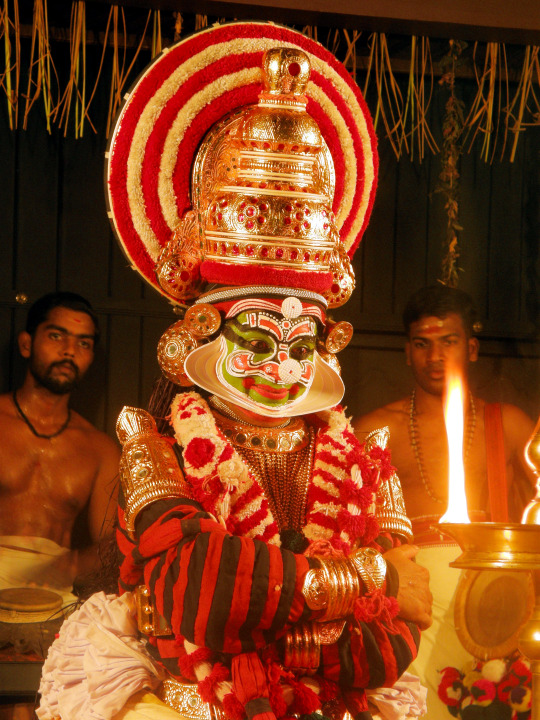
Notice the layered eye makeup in black, red, and white.
Here we have a closeup of a different performer where you can see it even more clearly.

The first time I saw Pavitr's eyes on screen, this is what immediately came to my mind as someone interested in traditional theaters of all kinds. Notice that Koodiyattam extensively uses reds and blacks, along with whites, which is also the colour palette that most spiderpeople choose, which is a cool coincidence. Blue is not that heavily used unlike the others however, but you can see it more in some costumes but generally not in makeup.
If we're talking less of what it reminded me of and more in terms of what the actual inspiration for the eye design probably was, it was most likely Kathakali, Koodiyattam's much younger, more well known, and very popular relative.
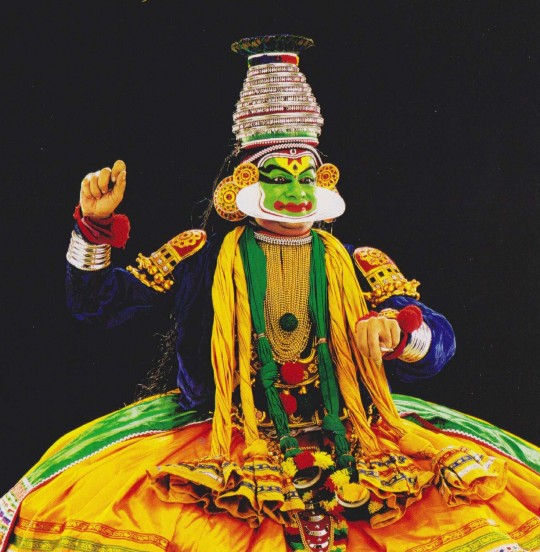
As you can see, Kathakali took its cues for costuming from Koodiyattam. (Actually it took its costuming cues from earlier art forms called Krishnattam, and Ramanattam, but they took it from Koodiyattam so it works.)
Again you can see the layered eye makeup, most prominently in black. (Cool fact, the costume and makeup changes according to the characters being portrayed on stage.)
Below is a picture of a Kathakali character with more elaborate eye makeup.
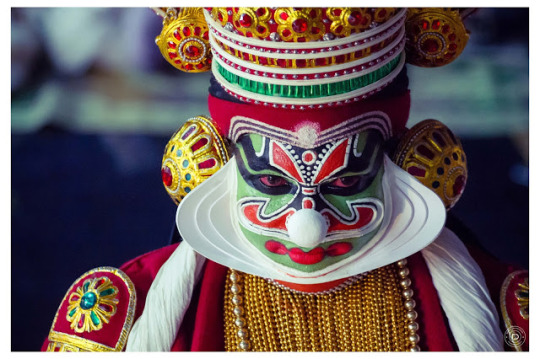
(I know a lot of you might think its the same makeup as Koodiyattam but I promise you its not. Inspired yes, same no.)
Because of the elaborate makeup and costume, expression can be a challenge so the art forms make maximum use of exaggerated body movements, hand signs, dance, lyrics etc. But the crowning element of acting in Koodiyattam and Kathakali are the eye techniques and how much simple eye movements can convey to the audience, which if you think about it, is also the case for spider-people. They're the most expressive superheroes in any medium, but they're fully covered so a lot of their expressiveness, both in comics and animation is conveyed through the shape of the eyes, body language, and speech. Another cool coincidence.
Below is a link to a short video which gives an brief overview of Kathakali and the importance of eyes in its performance.
youtube
This second link is a closeup of the eye movements of a female Kathakali character (women characters are called 'Minukku'). It shows how these highly trained artists can even move their eyes according to music. I have been told this can be uncomfortable to watch for some people so here's a warning for those who find eyeballs discomfiting.
youtube
And finally this one right here is a link to a short video on Koodiyattam.
youtube
{All three of these links are mainly aimed at people who find this sort of stuff interesting and want to check them out so if you're not, you can scroll past it, no big deal!}
(Oh man this is getting way too long and more like me gushing about traditional theatre than spiderman. Sorry about that.)
Now lets get back to our boy Pavitr. The second most noticeable feature of his mask is the curved, white line underneath his eyes, which gives off the impression of tusks. The first two pictures on this post already show the lines quite clearly but I'll attach one more angle.

Something that immediately came to mind when I saw them was Theyyam but I wasn't sure until I saw this post.
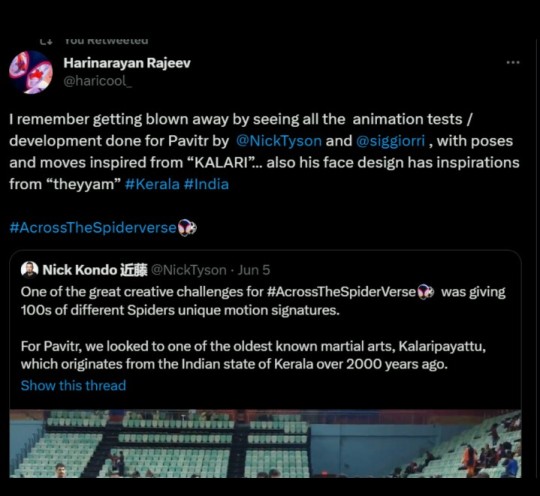
This was the same account that talked about how Pavitr's movements are inspired from Kalaripayattu so I was inclined to trust this. And after this one of the animators did confirm this so I was right on the money.
What exactly is Theyyam?
It is an ancient Hindu folk ritual practiced in northern Kerala, predominantly in the North Malabar region. Its origins can be traced back to the neolithic and chalcolithic eras. And unlike Koodiyattam and Kathakali which are associated with temples and the Koothambalam(temple theatre where temple artforms are performed), Theyyam is performed in the open air in Kaavu, the sacred groves of Kerala. The Theyyam performers become channels and vessels for the gods. Connect this to the 'Great Weaver'/ 'Master Weaver' who gave Pavitr his powers.
(Btw, these sacred groves are also ecological treasure troves and one of the ancient ways of nature preservation and they're really cool so check them out if you can.)
Below are two images of different Theyyams.
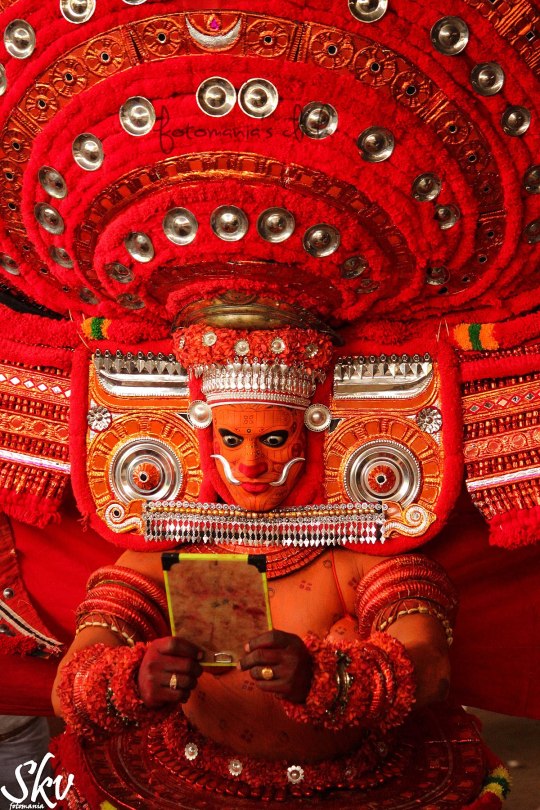
[Puliyoor Kali Theyyam]
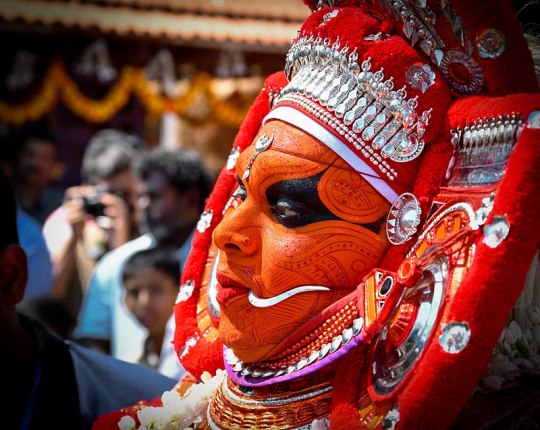
[Porrkali Theyyam]
See that on the cheeks? It resembles Pavitr's design closely right? While Pavitr's are drawn on his mask, these are singular metallic pieces, bound or clutched in the mouth to evoke the imagery and impression of tusks.
Theyyam is not alone in this particular imagery. A variety of folk arts use this, especially animism and folk rituals to show animal physical characteristics, as well as supernatural powers and elements.
For example, below is an image of Thirayttam, a ritual folk practice from the South Malabar region of Kerala. You can see the tusks here too. (Its not that clear, sorry about that.)

{Reminder: A lot of people think of Theyyam and Thirayattam as the same thing. While there are many similarities, with both being from the Malabar region, they are different practices. Theyyam is also called Tiṟa, and this is the main cause of the confusion but its not Thirayattam.}
Another example is Kalamezhuthu pattu, another religious folk art from Kerala. Mainly associated with the worship of the goddess Badhrakali, it is a sacred floor art done with powder and the result is called a Kalam. Below is a picture of a Kalam.
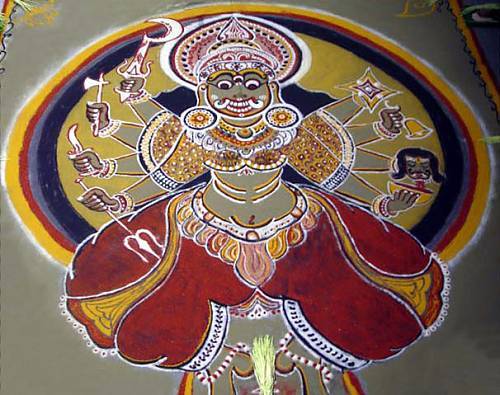
See those tusks? Yeah.
So they represent divinity, animal characteristics, inhuman powers etc.
[Interesting Info: Drawing Kalams are an integral part of Mudiyettu, a traditional ritual theatre and folk dance drama from Central Kerala. It is inscribed in the Representative List of the Intangible Cultural Heritage of Humanity. So do check it out if you're interested.]
{Oh my god I'm going off topic again. Come back bitch.}
To conclude, those lines are inspired by Theyyam markings, and stand for tusks and fangs, and as a spiderperson, who has the powers of a spider, gifted by some spiritual channel, its really apt that he was given such a design.
Next, lets talk about the lower half of Pavitr's mask.
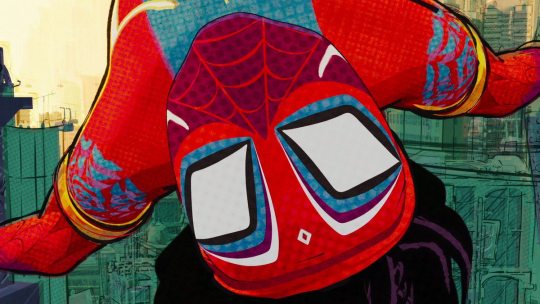
See those delicate red webs underneath the eyes?
This also reminded me of Theyyam. Its overshadowed by the more vibrant aspects of the costume, but a Theyyam's face has these intricate red patterns as well.
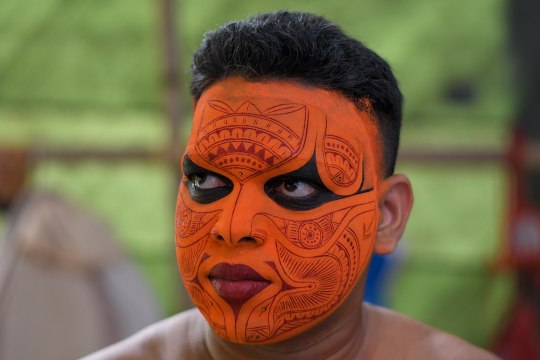
(Look at those eyes, reminds you of Pavitr's eye design right?)
And as you can see in this next image, after the headgear is put on, the designs mainly concentrate on the lower half of the face, much like Pavitr's mask.
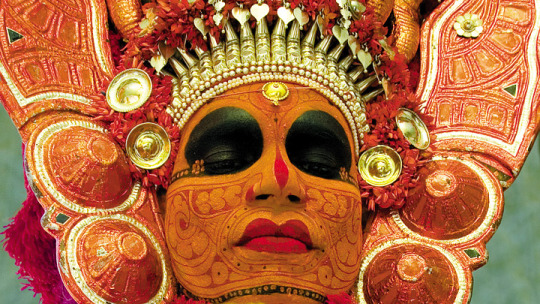
I admit I might be stretching this as web designs on the mask is a spiderman thing in general but I think I'm the pretty much on the dot on this one, and most likely its a combination of both.
[A 100% sure about that tusk thing though :)]
Also sometimes Theyyams would have these metallic eye coverings.
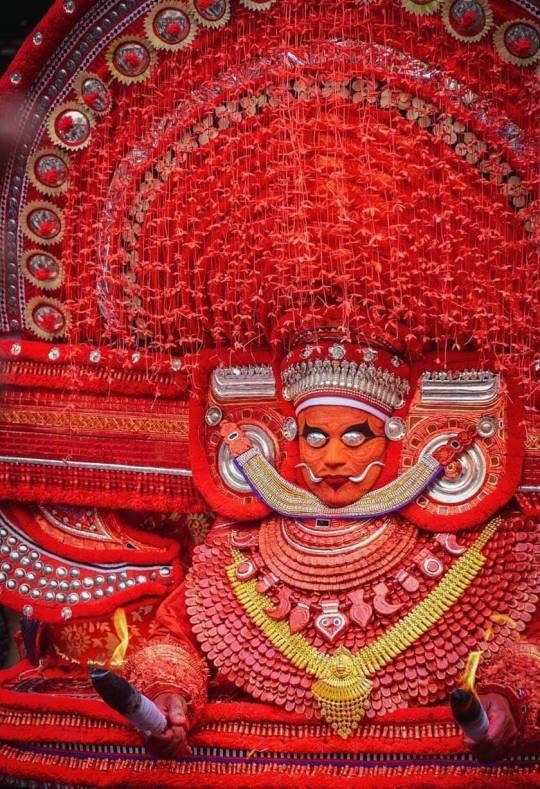
[Muchilot Baghavati Theyyam]
A closer look.
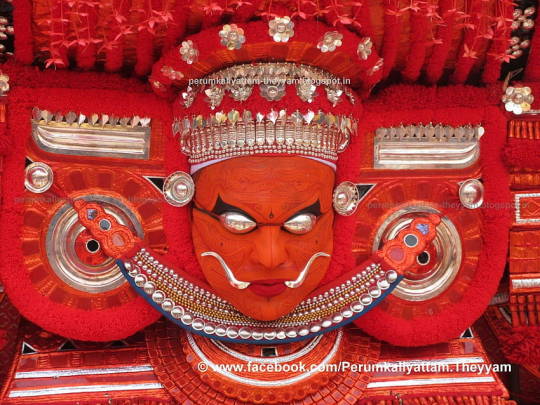
This is just my opinion but those silver eye masks kind of reminded me of the classic Spiderman eyes. Single colour, pupil-less, black outline, no idea how they see out of it etc. This one in particular reminded me of the classic spiderman especially with the eyes outlined in black like that.
Overall, the tusks, plus the thin web design on the mask, and the eyes, the spiderman red colour palette, they all evoked the image of Theyyam for me when I first saw Pavitr on screen.
{There is a very similar art form to Theyyam called Bhootakola in the coastal region of Karnataka, another southern Indian state. Those curious about Theyyam can check out the Kannada movie Kantara which deals with Bhootakola and you'll get an idea about Theyyam as well. The movie is awesome by the way. Watch it if you can.)
(This is getting way too long and image heavy. And I'm also going off tangent too much. Gotta wrap this up!)
Finally lets talk the last aspect of Pavitr's mask. This might actually be the feature that most of the non-Indian audience identified as Indian without anyone pointing it out.
I'm talking about the white, diamond shaped marking on Pavitr's forehead.
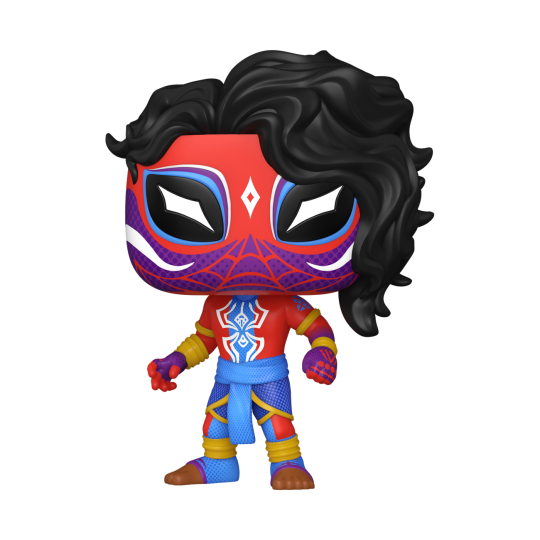
This decorative marking, bindi/pottu/tilaku, might actually be the most recognizable aspect of Indian culture across the world.
If you scroll back to all the previous images I provided, you can see some variation of this in all of them, either drawn on, or as an ornament. While there are some cultural differences in how they're worn, like women in southern India wearing them in all stage of life while their northern counterparts wear them only after marriage(I could be wrong about this, as I've seen children wearing them often, and things could've changed in modern times so please do correct me if I'm wrong), its one of the most common motifs you'll see across the country.
It can be a simple, round mark.
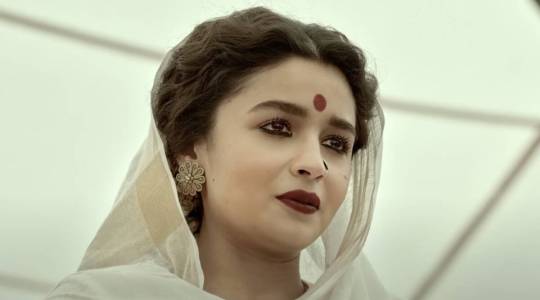
It can be ornamented.

It can be a different shape altogether.
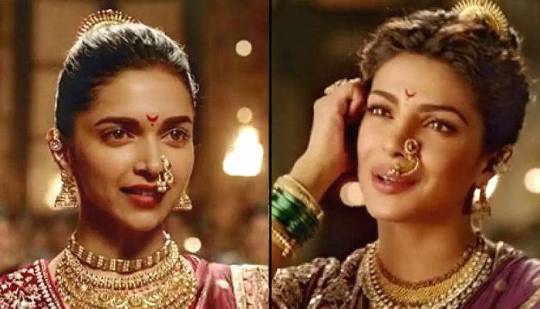
(From the musical sequence 'Pinga' in the Hindi film Bajirao Mastani)
A different colour.
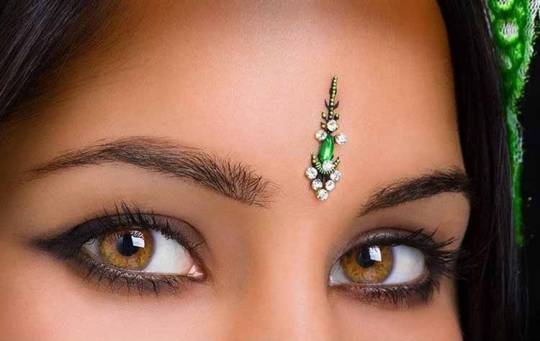
You get the idea.
Men can wear it as well. though styles and decoration maybe different.
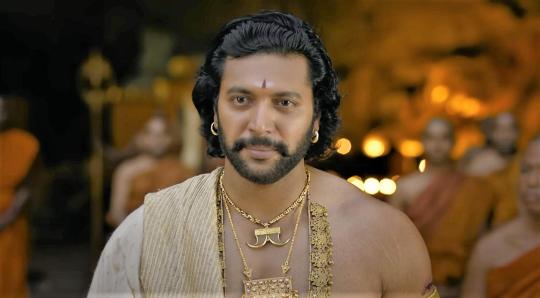
(From the Tamizh film Ponniyin Selvan 1)
A more modern version.
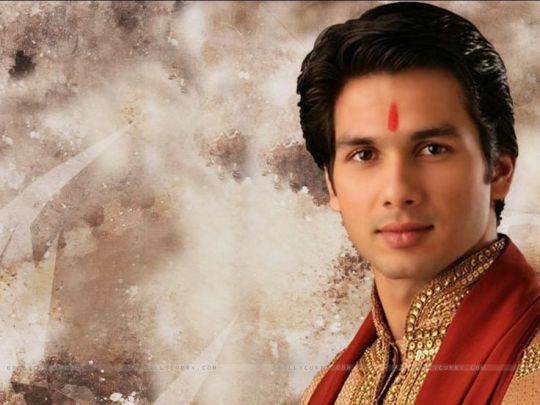
Geography wise, the bindi/pottu/tilak is predominantly seen in India, but its also found in other countries of the Indian subcontinent and neighbouring nations, as well as South-East Asia(as they were both part of the ancient Indosphere and had a past of Hindu Kingdoms. See: Srivijaya(Sriwijaya) empire, Indonesia).
Similar forehead markings were even common in China in the past. Those who have seen wuxia and xianxia dramas and movies definitely have seen them before and know what I'm talking about. (Huadian 花鈿)
Religion wise, its predominantly a Hindu motif, but its also part of Buddhist, Jain, Sikh, as well as several other indigenous religions.
{I've actually seen several Indian Christians and Muslims wear it as well, because its their culture, even if its not their religion.}
EDIT: Gaaaaah! I forgot to include this even though I'd intended to from the beginning.
This is not about the mask but some of the prototype designs for Pavitr so I thought I'll just talk about them a bit here.
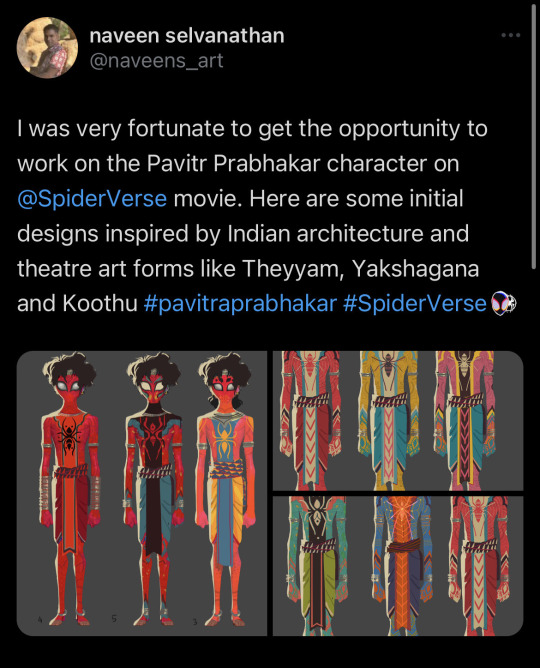
Again I can't believe all the effort that went into making this movie. Just look at those designs. Absolutely stellar and inspired. The colour palette itself is amazing.
Honestly everyone else just has no excuse anymore.
[I'll focus on the theatre aspect like I've been doing and talk about the architecture bit sometime else.]
This one is obviously the Theyyam inspired one.

(Look at the eyes of 4 and 3, you can see they're inspired by the silver eye-mask I mentioned before. Also the headband is silver and looks similar to the bands securing a theyyam's headgear in place.)
A lot more Theyyam elements than what made it to the final cut. Especially the jewellery and the sharp-eyed among you must've already noticed the similarity between the necklaces of the design and the necklaces of the theyyams whose images I provided. The bangles and the anklets are also very distinctively Theyyam and they're called Katakam and Chutakam respectively but the final design seems to have made the bangles gold and more bracelet-like, and the anklets more like ankle-cuffs.
(I so badly wish the necklace stayed in but yeah that could've hindered movement.)
Now lets come to the Yakshagana inspired one.

(Notice how the shape of the eyes have changed? And the colour palette took a turn? A lot more gold coming in.)
Yakshagana is a form of traditional theatre originating in modern day Karnataka state of India, and currently practiced in both Karnataka and Kerala. It is primarily an art form from the coastal Karnataka region and the neighbouring Kasargod district of Kerala.
Below is a link to more information on Yakshagana so you can take a look at the costuming and see the influences in the above prototype more clearly.
(I'm not gonna go into detail about all the design choices in the Yakshagana prototype, maybe in another post.)
Now lets come to the final prototype.
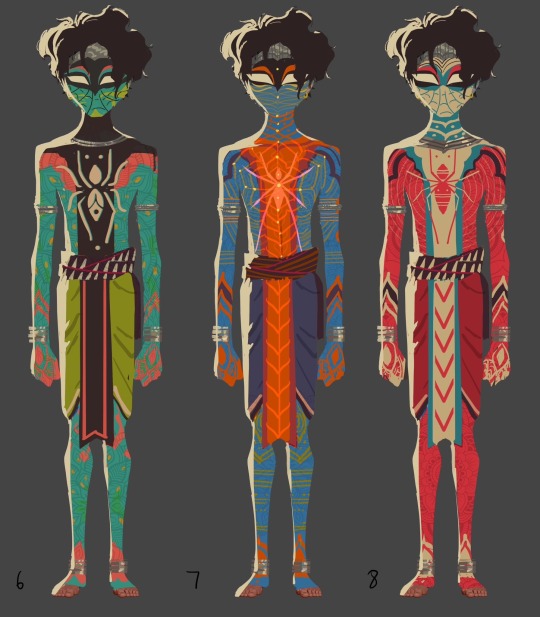
(Again the colour palette has shifted, a lot more greens and blues. I do believe that 8 is koothu and not Yakshagana even though it was included in the image above. I say that because of all the white in the design which is very distinctive of a kind of koothu as far as I'm aware.)
I actually already mentioned koothu once before in this post when I was talking about Koodiyattam in the very beginning. So lets go back to it.
Koothu is a folk theatre art that originated in early Tamizh country(Tamizhakam), and broadly speaking, its of two types, Terrukuttu, and Kattaikkuttu. It reached its peak in the golden age of Tamizh culture, the Sangam era and it mainly depicts scene from the epics. Currently types of Koothu are practiced in modern day Tamil Nadu and Kerala(Kerala was once part of ancient Tamizhakam).
Below is a link that will give you more info and an image of the costume with makeup similar to 6.
And this one is a link to a particular kind of koothu in Kerala known as Chakyar Koothu cos all the white on the make of prototype version 8 reminded me of it. (Also Chakyar Koothu is a form of social satire and criticism, it was basically ancient Stand-up comedy and the Chakyar is supposed to be really witty, which fits Spiderman to a T I gotta say.)
Again I'm not gonna go into further details and nuances of the design as this is a prototype design, maybe some other time. But I have to say that this colour palette does make Pavitr a lot more spideresque or evoke a more primal spider energy cos how it connects the viewer to jungle like and more animalistic environments more than the other designs.
And that's it for the mask and the prototypes everybody! Yay!
Holy shit that was long!
I'm gonna stop here for now cos this is already way too much. Can't believe I thought I'd be able to look through the entirety of Pavitr's design in one post. What was I on?
Seriously what kind of drug?
Anyway I'll be making a part 2 for this, looking through Pavitr's clothes and and movements and all. I say Part 2 but considering what happened with the mask I'm pretty sure it might go up to Part 3 or 4. Here's to hoping I learn some moderation by then lol.
(All the images are from google images and I have taken and have credit for exactly none of them. The verbiage is mine completely though.)
#Pavitr Prabhakar#Spiderman India#Indian spiderman#desi spiderman#spiderman atsv#character design#desi design#the desi-gn get it? I'll show myself out#across the spiderverse#spiderman: Into the Spiderverse#Spiderman: Across the Spiderverse#sony spiderverse#atsv#so much love and effort went into this movie and it shows#it was absolutely magnificent#character design inspiration#Indian culture#traditional theatre#traditional artforms#Theyyam#Koodiyattam#Kathakali#Yakshagana#Koothu#Tamil culture#Tamizh culture#Malayali culture#Kannada culture#tulu culture#tuluva culture
82 notes
·
View notes